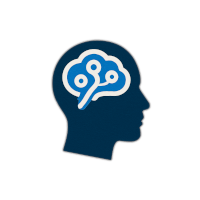Enterprise Architecture Mastery
Master the art and science of designing scalable, secure, and efficient enterprise systems from strategy to implementation
0% Complete
Modules
Introduction to Enterprise Architecture
Understand the fundamentals, frameworks, and strategic importance of enterprise architecture
Introduction to Enterprise Architecture
Enterprise Architecture (EA) is the practice of analyzing, designing, planning, and implementing enterprise analysis to successfully execute on business strategies. It provides a holistic view of an organization's IT landscape and business processes.
🏗️ What is Enterprise Architecture?
Enterprise Architecture is a comprehensive framework that describes the structure and operation of an organization. It encompasses:
- Business Architecture - Business processes, organizational structure, and capabilities
- Application Architecture - Software applications and their interactions
- Data Architecture - Data assets, management, and flow
- Technology Architecture - Hardware, software, and network infrastructure
Key Benefits of Enterprise Architecture
- Strategic Alignment - Ensures IT supports business objectives
- Cost Optimization - Reduces redundancy and improves efficiency
- Risk Management - Identifies and mitigates architectural risks
- Innovation Enablement - Provides foundation for digital transformation
- Compliance - Ensures adherence to regulations and standards
📋 Enterprise Architecture Frameworks
1. TOGAF (The Open Group Architecture Framework)
The most widely adopted EA framework, providing:
- ADM (Architecture Development Method) - Step-by-step approach to developing EA
- Architecture Repository - Structured approach to storing architectural artifacts
- Enterprise Continuum - Classification system for architectural assets
- Architecture Capability Framework - Guidelines for establishing EA practice
2. Zachman Framework
A comprehensive taxonomy for organizing architectural artifacts:
- Six Perspectives - Planner, Owner, Designer, Builder, Implementer, Worker
- Six Aspects - What, How, Where, Who, When, Why
- 36 Cells - Each intersection represents a unique architectural view
3. FEAF (Federal Enterprise Architecture Framework)
Government-focused framework emphasizing:
- Performance Reference Models
- Business Reference Models
- Service Component Reference Models
- Technical Reference Models
4. ArchiMate
Modeling language for enterprise architecture:
- Visual notation for architectural concepts
- Standardized way to describe architectures
- Integration with TOGAF methodology
🎯 The Role of an Enterprise Architect
Core Responsibilities
- Strategic Planning - Align IT strategy with business strategy
- Architecture Design - Create target state architectures
- Standards Development - Establish architectural principles and standards
- Technology Evaluation - Assess new technologies and their fit
- Governance - Ensure compliance with architectural decisions
- Communication - Present complex concepts to diverse stakeholders
Required Skills
- Technical Skills - Deep understanding of technology trends and capabilities
- Business Acumen - Understanding of business processes and strategy
- Communication - Ability to translate between technical and business domains
- Analytical Thinking - Problem-solving and systems thinking
- Leadership - Influence without authority, change management
🔄 Architecture Development Lifecycle
Phase A: Architecture Vision
- Define scope and approach
- Identify stakeholders
- Create architecture vision
- Obtain approval to proceed
Phase B: Business Architecture
- Develop baseline business architecture
- Develop target business architecture
- Perform gap analysis
- Define roadmap components
Phase C: Information Systems Architecture
- Data Architecture development
- Application Architecture development
- Technology Architecture development
Phase D: Technology Architecture
- Develop baseline technology architecture
- Develop target technology architecture
- Perform gap analysis
- Define roadmap components
📊 Architecture Maturity Models
Level 1: Initial/Ad Hoc
- No formal architecture process
- Reactive approach to technology decisions
- Limited documentation
Level 2: Developing
- Basic architecture processes established
- Some documentation and standards
- Limited governance
Level 3: Defined
- Formal architecture processes
- Comprehensive documentation
- Active governance
Level 4: Managed
- Metrics-driven architecture
- Continuous improvement
- Strong stakeholder engagement
Level 5: Optimizing
- Innovation-focused
- Predictive capabilities
- Industry leadership
🛠️ Essential EA Tools and Technologies
Modeling Tools
- Enterprise Architect - Comprehensive modeling platform
- ArchiMate - Open standard for architecture modeling
- Visio - Microsoft's diagramming tool
- Lucidchart - Cloud-based diagramming
Repository Tools
- MEGA - Enterprise architecture suite
- Software AG ARIS - Business process and EA platform
- IBM Rational System Architect - Enterprise architecture tool
Analysis Tools
- Application Portfolio Management - Tools for analyzing application landscapes
- Dependency Mapping - Tools for understanding system relationships
- Cost Analysis - Tools for TCO and ROI analysis
